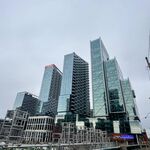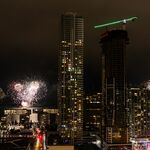Is it illegal to turn left if the left turn signal is red, but intersection light is green?
JASON TCHIR
Special to The Globe and Mail
March 24, 2017 June 14, 2016
When you come to an intersection with an advanced green light for left turns, are you allowed to turn left when that signal is red as long as the intersection is green? Of course you only proceed when it is safe to do so. I'm talking about the dedicated lanes with their own turn signal. I've been going through them for 25 years - but my friends and family think I'm nuts. - David, Toronto
If the turn lane has its own traffic light, Ontario's Driver's Handbook calls it a "fully protected left turn." But, if you go through it when it's red, you'll have no protection from a $260 fine and three demerit points, police say.
"If it's a regular intersection with oncoming traffic you must have a green… you cannot enter the intersection on a red," said Const. Clint Stibbe, with Toronto Police Traffic Services. "Except if you are a driving a road building or cleaning machine, then you are permitted - but only when safe to do so."
So, if you've got a red light in your lane, you can't turn, period. Well, sometimes you can, but we'll get to that in a second.
It gets a little confusing. That's because there are different types of advanced green lights for left turns in Ontario.
For a normal advanced turn, the intersection has
one traffic light with a flashing green light or arrow.
The traffic coming toward you has a red, so, on your green, you can turn left, right or go straight. Once the green light stops flashing or the arrow switches off, you've got a solid green and you can still turn left - as long as it's clear - before the light turns amber.
Then, we've got the
simultaneous left turn. Here, traffic in both directions has an advanced left signal. Again, it's one traffic light for the intersection. Traffic going straight has a red and traffic turning left gets a flashing arrow. When that arrow turns to amber and the solid light turns green, then you can turn left if it's clear.
But, sometimes, the intersection has
one signal light for the left turning lane and another for the lanes that are going straight and turning right. Sometimes, that lane is separated from the others by a median.
"A dedicated left turn has a separate signal head and when it is red, you cannot make a left turn," said Brampton driving instructor Ian Law.
So, if you've got a light in your lane and it's red, it doesn't matter if all the other lanes have a solid green. They get to go and you don't. You've got to stop and wait for the next advanced green.
If you stop at the red and then turn anyway, you could be charged with proceeding before a green light. If you don't stop at all, you could be charged with failing to stop at a red light, Stibbe said. [...]













